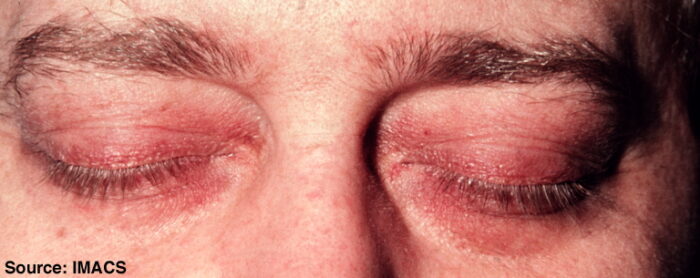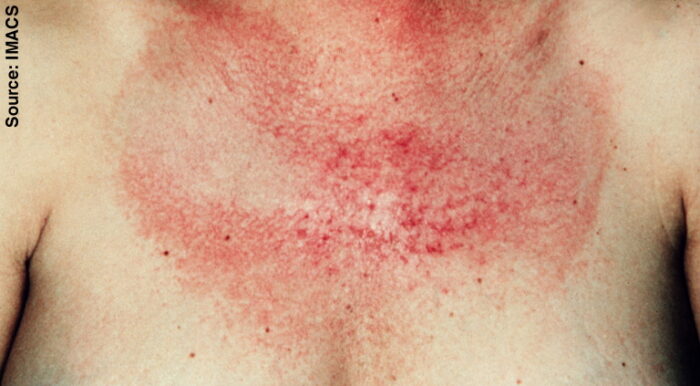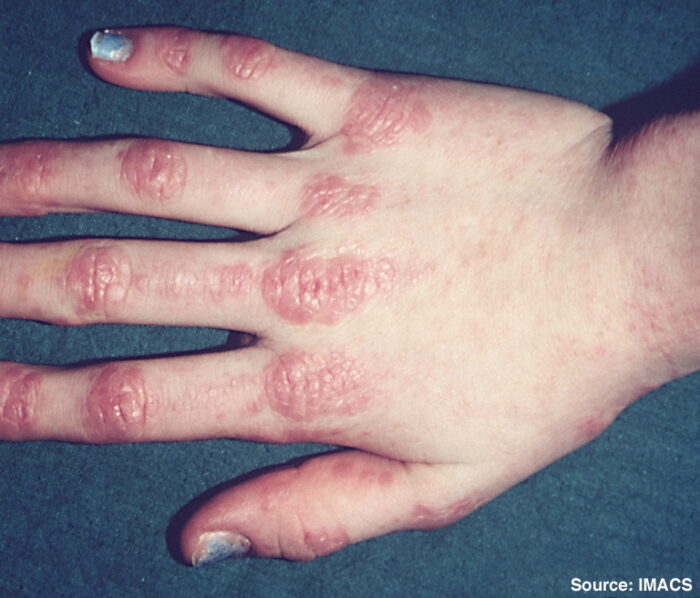Classic dermatomyositis (DM) can affect people of any age or sex, but it is found more often in women than in men. For reasons that are poorly understood, dermatomyositis is more prevalent in African-American women. As with other types of myositis, there is no known cause or cure for dermatomyositis. Although there is not currently a cure, there are treatments that have seen success in managing symptoms.
Dermatomyositis Signs and Symptoms
The following symptoms are common for DM patients:
- Rash on the eyelids, cheeks, nose, back, upper chest, elbows, knees, and knuckles
- Scaly, dry, or rough skin
- Trouble rising from a seated position or getting up after a fall
- General tiredness
- Inflamed or swollen areas around fingernails
- Sudden or progressive weakness in muscles in neck, hip, back, and shoulder muscles
- Difficulty swallowing (dysphagia) or a feeling of choking
- Hardened lumps or sheets of calcium (calcinosis) under the skin
If you’re experiencing any of these dermatomyositis symptoms, we encourage you to talk to your doctor to begin the diagnosis process. Since myositis is a rare disease, not all physicians are familiar with the signs and symptoms. If you’re struggling to find an accurate diagnosis, visiting a specialist can help.
Rash and Muscle Weakness
DM is usually the easiest type of myositis to diagnose because of the distinctive skin rash, which often appears before any muscle weakness is felt. The rash looks patchy, dark, and reddish or purple. It is most often found on the eyelids, cheeks, nose, back, upper chest, elbows, knees, and knuckles.



While the rash of dermatomyositis may be the first sign of the disease, those with darker skin may not notice the rash as readily.
Some people also develop hardened bumps under the skin, called calcinosis.
The skin rash and weak muscles are caused by inflammation, or swelling, in the blood vessels under the skin and in the muscles, also called vasculitis. The weakness typically begins with muscles that are closest to and within the trunk of the body, such as the neck, hip, back, and shoulder muscles. Some DM patients also have muscle pain that accompanies the weakness.
Clinically Amyopathic Dermatomyositis
Patients who have the skin rash but feel no muscle pain or weakness most likely have clinically amyopathic DM (CADM), or DM sine myositis. Studies have shown that over 20% of DM patients have the clinically amyopathic subtype. These patients often list fatigue as a symptom, but do not experience the same muscle pain or weakness as classic DM patients. CADM can be further classified into amyopathic DM and hypomyopathic DM. Amyopathic patients have neither clinical nor laboratory evidence of muscle disease. Hypomyopathic patients do not experience muscle pain or weakness but have signs of muscle inflammation on laboratory testing.
Revised April 2025 by Victoria Werth, MD – dermatologist, research scientist, and TMA medical advisor
Disclaimer: Information provided on this website is for educational purposes only and is not a substitute for professional medical advice, diagnosis, or treatment. Always consult a qualified healthcare provider with any questions you may have regarding a medical condition.